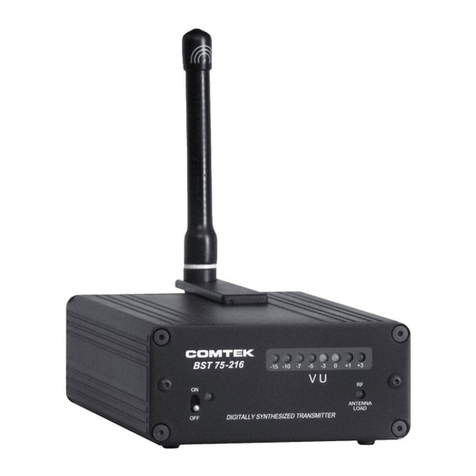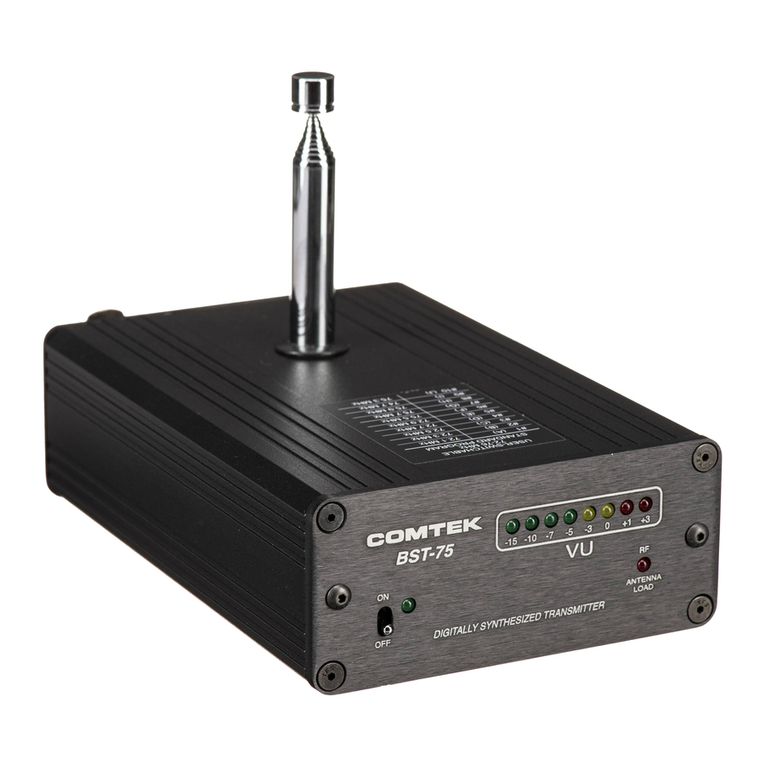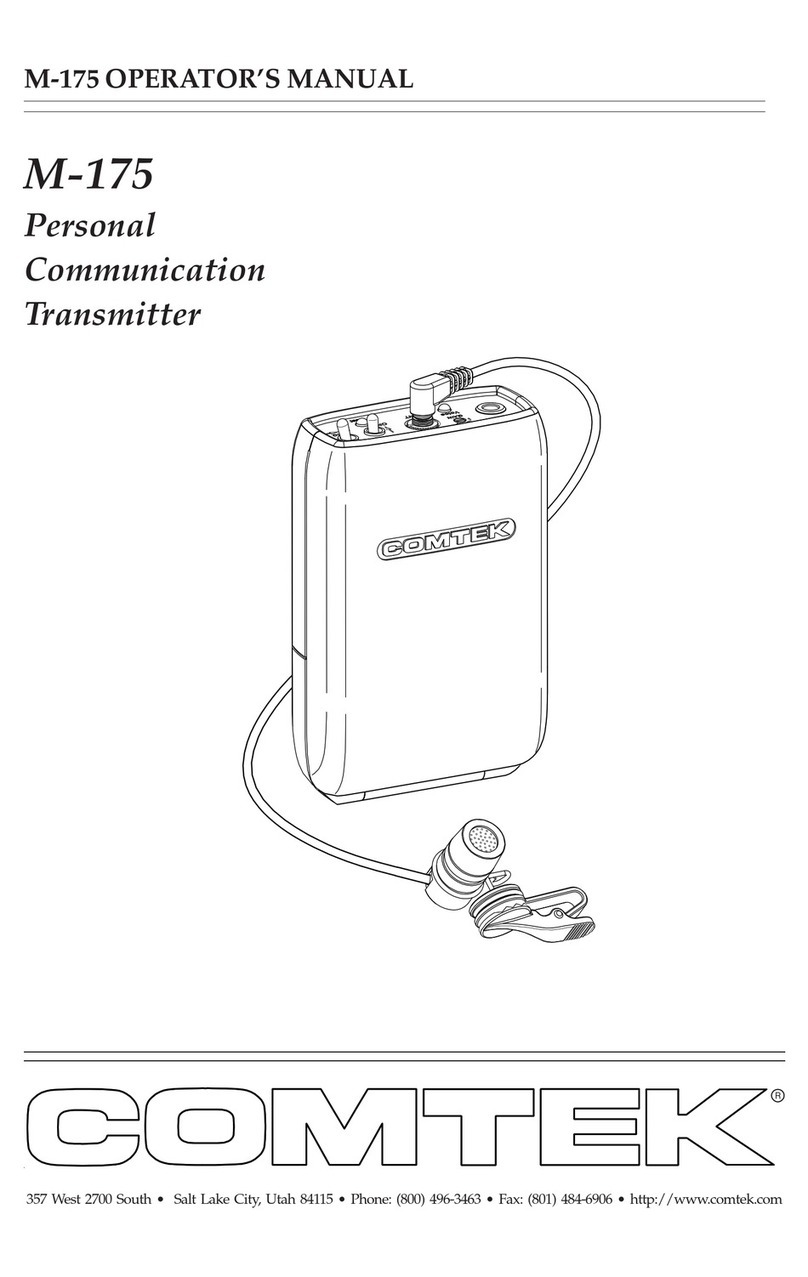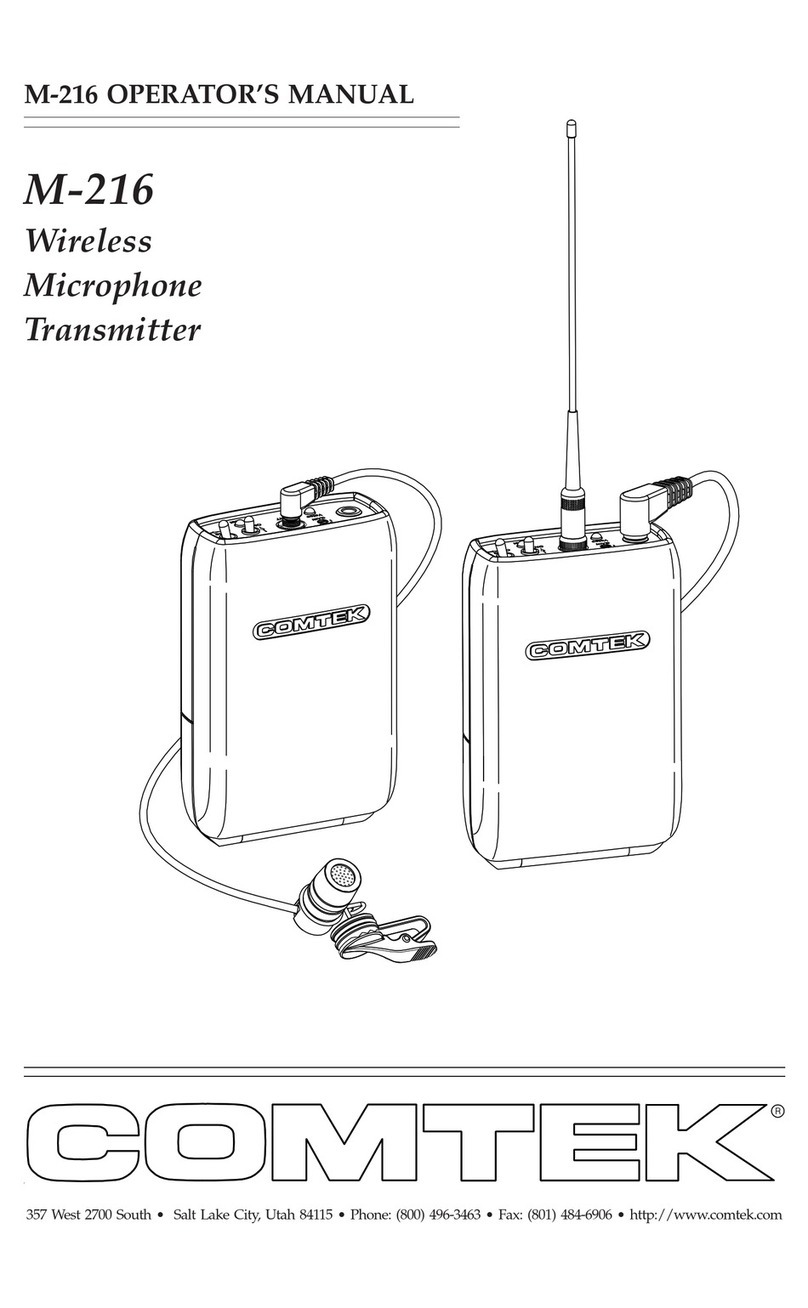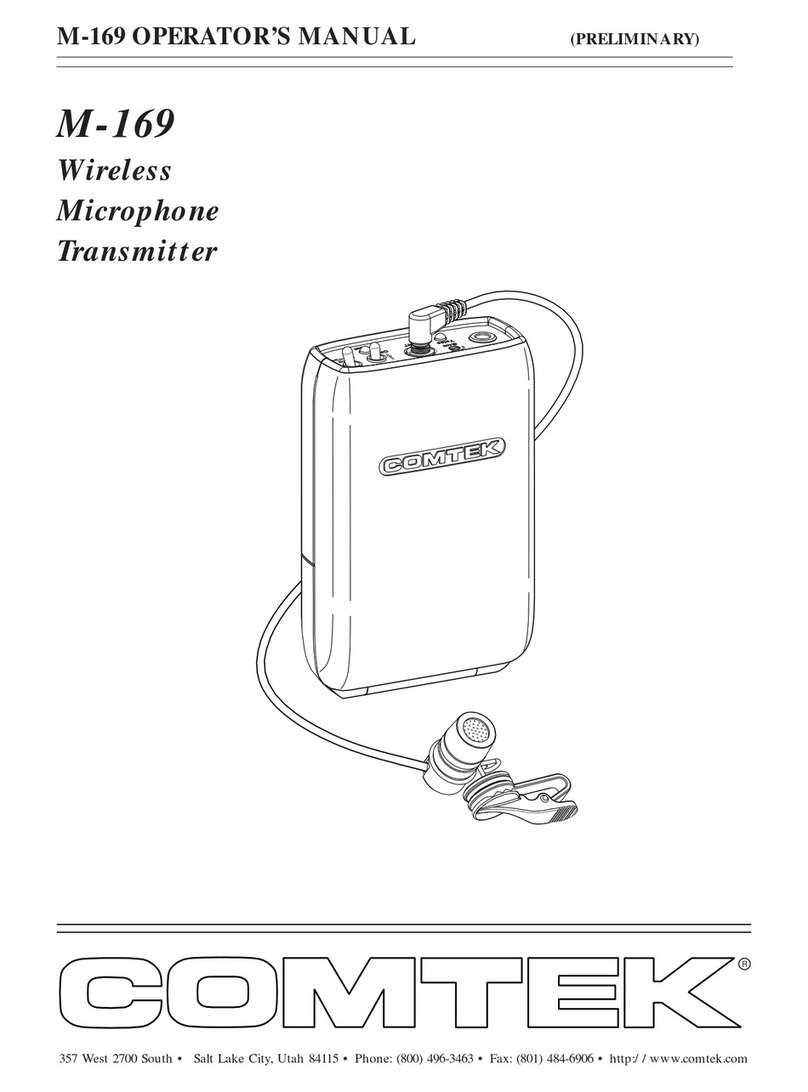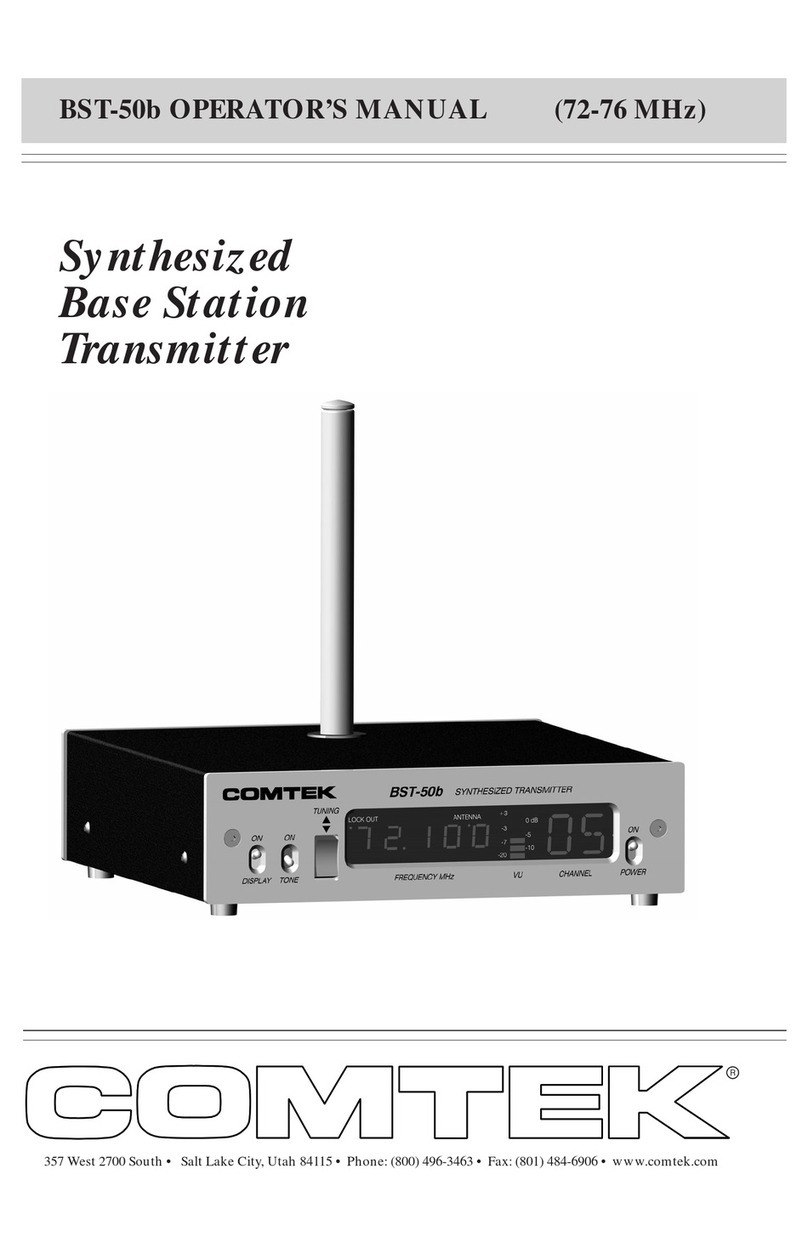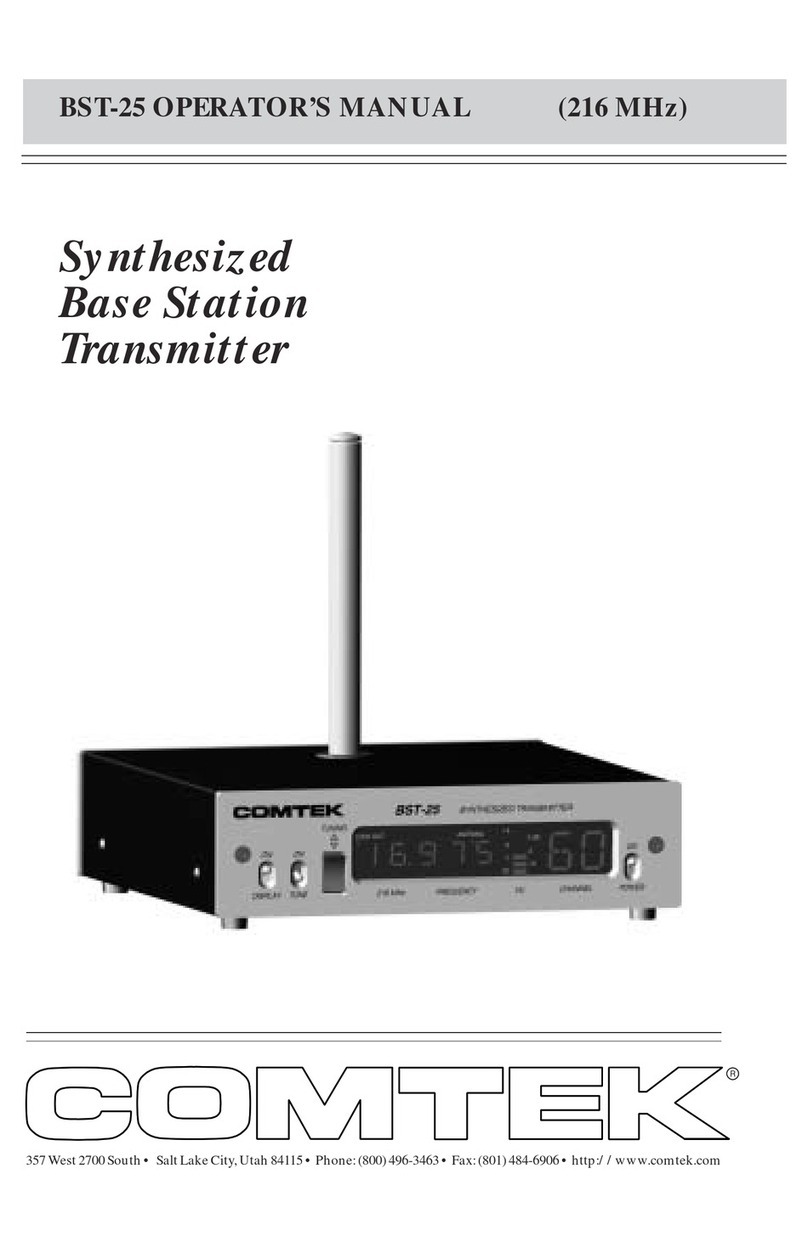Page 3
Frequency Selection (216-217 MHz)
The M-216 transmitter can operate on one of 57 available channels between
216 MHz and 217 MHz. COMTEK’s channel designations indicate both
standard narrow-band channels and high-fidelity, wide-band companded
channels. Channels 1-40 are narrow-band channels (5 kHz deviation)
offering compatibility with other manufacturers’ receivers such as the
Phonak MicroEar. Channels 41-60 are high-fidelity, wide-band companded
channels (10 kHz deviation) for use with COMTEK transmitters. COMTEK
transmitters automatically transmit the proper modulation when set to
channels 1-40 for narrow-band or 41-60 for wide-band companded channels.
After you have determined the channel on which
you are going to operate, position the two rotary
switches to indicate the channel. The left rotary
switch is for tens and the right rotary switch is
for ones. To select channel 41 (216.0250 MHz),
position the left rotary switch to point to 4 (X10),
and position the right rotary switch to point to 1 (X1).
Refer to frequency charts on pages 9 and 10 for selectable frequencies.
Multiple Channel Operation
When multiple transmitters are broadcasting in the same immediatearea
(within 100 feet), the RF signals will “mix” together generating additional
signals. Ifthese productfrequencies aretooclose toafrequency whichyou are
using,you will experienceintermodulation interference. This conditionis
commontoall radioreceiversto someextent.
Simultaneous operation of more than three channels requires frequency
coordination to avoid intermodulation interference, which could result in
poor or unusable performance.
To avoidthis typeofinterference,youshould selectfrequenciesfrom oneofthe
standard groups (see frequency group charts on page 10), or use COMTEK’s
frequencyselectionsoftware(www.comtek.com/software.htm)todetermine
appropriatefrequencies or contact COMTEK to obtain a free copy.
M-216 OPERATING INSTRUCTIONS






